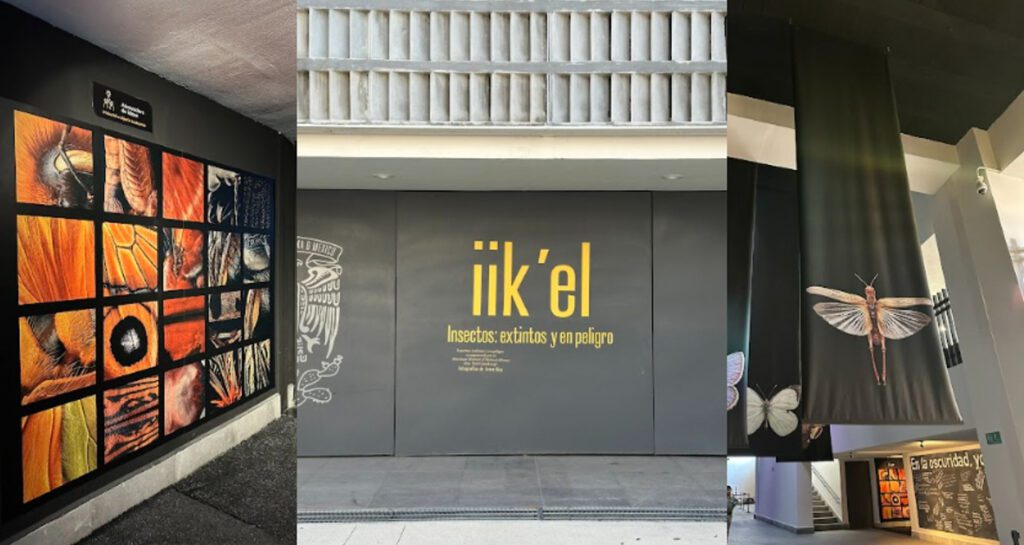Step into the world of the unseen and overlooked at the Museo de la Luz Mérida, where the groundbreaking exhibition iik’el | Insectos: Extintos y en Peligro invites us to reconsider our relationship with the planet’s smallest creatures. This visually arresting and thought-provoking showcase highlights the beauty, complexity, and fragile existence of insects through the lens of renowned British macro photographer Levon Biss.
At a time when global ecosystems are under threat, this exhibit delivers a powerful message: the tiniest beings—bees, beetles, butterflies, and beyond—play an enormous role in the health and survival of life on Earth.
Macro Masterpieces That Magnify Urgency
iik’el, which means “insect” in Maya, features 40 insect species in extreme detail, selected from the prestigious entomological collection of the American Museum of Natural History. Using microscopic lenses and over 10,000 photographs per insect, Biss builds enormous portraits that reach up to 2.5 meters tall. These images reveal the intricate structures, iridescent colors, and mesmerizing forms of insects we might otherwise ignore.
From the bright wings of the endangered Madeira Brimstone butterfly to the armored limbs of the long-lost Rocky Mountain locust, each photo becomes a portal into the insect’s world—and a sobering reminder of its vulnerability.
More Than Just a Pretty Picture
Beyond the sheer visual awe, the exhibition dives deep into urgent environmental themes:
- Extinction and Rediscovery: Insects like the monarch butterfly and the Lord Howe Island stick insect take center stage, their stories highlighting both loss and resilience. Some have vanished from sight for over a century, while others were miraculously rediscovered—like whispers from a fading world.
- The Silent Crisis: Unlike charismatic megafauna, insect extinction rarely makes headlines. Yet these tiny creatures are responsible for pollinating our crops, decomposing waste, and maintaining ecosystems. Their decline signals broader environmental collapse.
- Human Impact: The exhibition pulls no punches in revealing our role in insect endangerment. Climate change, habitat destruction, pesticide use, and invasive species—all driven by human activity—are accelerating their disappearance at alarming rates.
A Maya Perspective: In a poetic integration of science and culture, iik’el also explores the spiritual connection between insects and the ancient Maya worldview. For the Maya, insects weren’t just part of nature—they were messengers, deities, and interpreters of the Earth’s rhythms.
The Wild Garden: A Living Laboratory
As part of the exhibition, the outdoor space Jardín Silvestre offers a fresh take on garden design. Here, nature is left to grow freely, celebrating native “weeds” and inviting pollinators to return. This evolving landscape becomes a living journal—a bitácora viva—where visitors can observe the spontaneous interaction between flora and fauna without human interference.
Meet the Artist: Levon Biss
Levon Biss is no ordinary photographer. Internationally acclaimed for his pioneering work in extreme macro photography, Biss has exhibited in top museums around the world. His meticulous technique and artistic vision allow us to see what the naked eye cannot. With each frame, he challenges us to find beauty—and urgency—in the minute.
Why This Matters in Yucatán
Hosting this exhibition in Mérida feels especially meaningful. Yucatán is a region where biodiversity and ancestral knowledge intersect. At the Museo de la Luz, iik’el bridges modern science with ancient wisdom, and offers visitors a call to action wrapped in breathtaking visuals.
Whether you’re a student, a scientist, an artist, or simply a curious observer, this exhibition is a must-see. Come ready to be amazed—and moved.
Don’t Miss It: 📍 Museo de la Luz Mérida
📅 Open from March 15, 2025
🌐 www.museodelaluz.com
🎫 Free with museum admission




